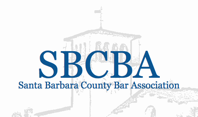RENTER’S RIGHTS – FREQUENTLY ASKED QUESTIONS – GENERAL INFORMATION
Q. How large of a security deposit can a landlord require from a tenant?
A. If the unit is furnished, the landlord can require up to three times the monthly rent. If the unit is unfurnished, the landlord can require up to two times the monthly rent.
Q. When can I expect to get my security deposit back?
A. Within 21 days, a landlord is required to (a) return the security deposit to the tenant, (b) provide an itemized statement that explains how the deposit was spent, or (c) a combination of (a) and (b). (Civil Code Section 1950.5)
Q. What types of charges may a landlord deduct from a security deposit?
A. A landlord may charge the tenant for the following reasons: cleaning, unpaid rent, and damage to the rental unit (beyond normal wear and tear).
Q: Can a landlord increase the rent?
A. If the lease is for more than 30 days, the rent cannot increase during the term of the lease (unless the lease provides for rent increases). If the lease is month-to-month, the landlord may increase rent if they provide you with proper notice in writing. A landlord must give at least 30 days’ notice if the rent is increasing by 10% (or less). A landlord must give at least 60 days’ notice if the rent is increasing by more than 10%. (Civil Code Section 8.27)
Q. For what reasons may a landlord enter an occupied rental unit?
A. California law provides for five different reasons a landlord may legally enter a rental unit:
1) In an emergency
2) When a tenant has abandoned the unit or moved out
3) To make necessary/agreed-upon repairs, decorations, alterations, or other improvements
4) To show the unit to prospective tenants/buyers/lenders or provide entry to contractors or workers who are to make repairs on the unit
5) If the landlord has a court order permitting entry
In all situations except the first two listed, the landlord must give the tenant 24-hour written notice before entering the unit.
Q. What makes a rental unit legally “uninhabitable?”
A. If a rental unit substantially lacks any of the following, it is considered uninhabitable:
1) Effective waterproofing and weather protection of roof and exterior walls
2) Plumbing system in good working order that is connected to a sewage system (includes hot/cold running water)
3) Gas facilities in good working order
4) Heating facilities in good working order
5) Electric system in good working order
6) Clean/sanitary buildings and grounds free from debris, garbage and pests
7) Trash receptacles in good working order
8) Floors, stairways, and railings in good working order
9) Contains lead hazards without containment
Q. What can I do if my unit is uninhabitable?
A. A tenant has five options if the unit is uninhabitable. Notice to the landlord regarding the problems must be given before exercising any of these options. It is suggested to provide notice in writing and wait at least 30 days for a landlord to remedy the problems.
1) Move out
2) Call attention to the problem by notifying local city code enforcement inspectors, health department inspectors, etc.
3) Repair the problem and deduct cost from rent (provide a copy of the bill with the rent)
4) Withhold rent (this is risky however and could result in eviction if the problem is not seen as serious enough or was tenant caused)
5) Sue for damages
If you believe that your dwelling unit is uninhabitable, please contact the SBCBA Lawyer Referral Service BEFORE using any of the above options. Speaking with an attorney will help insure protection of yourself and as well as your tenancy. (805) 569-9400.

Leave a Reply
Want to join the discussion?Feel free to contribute!